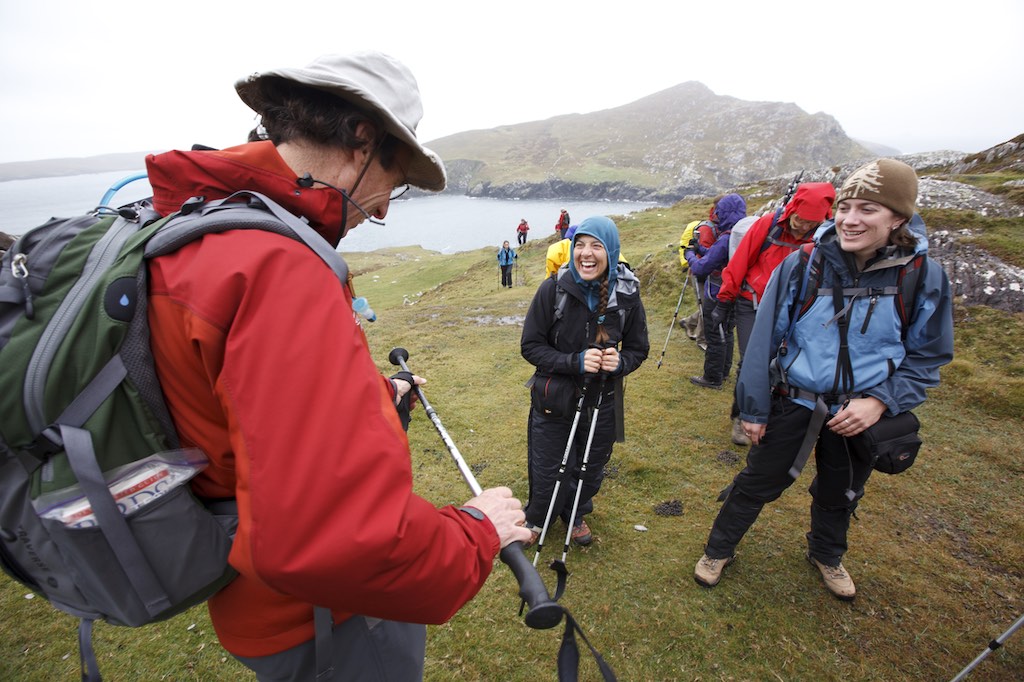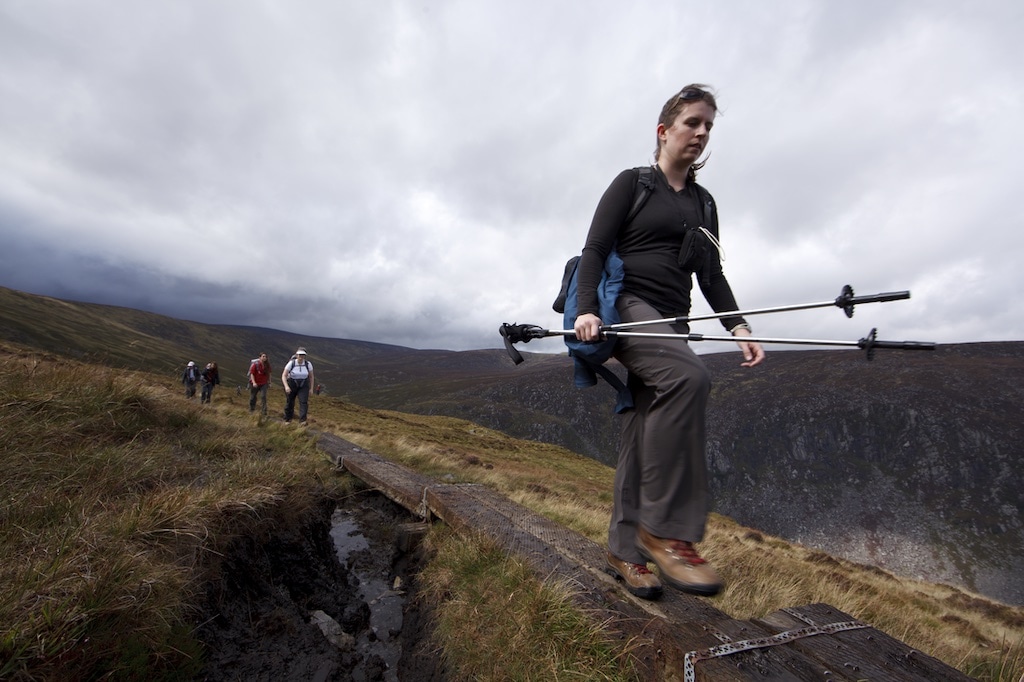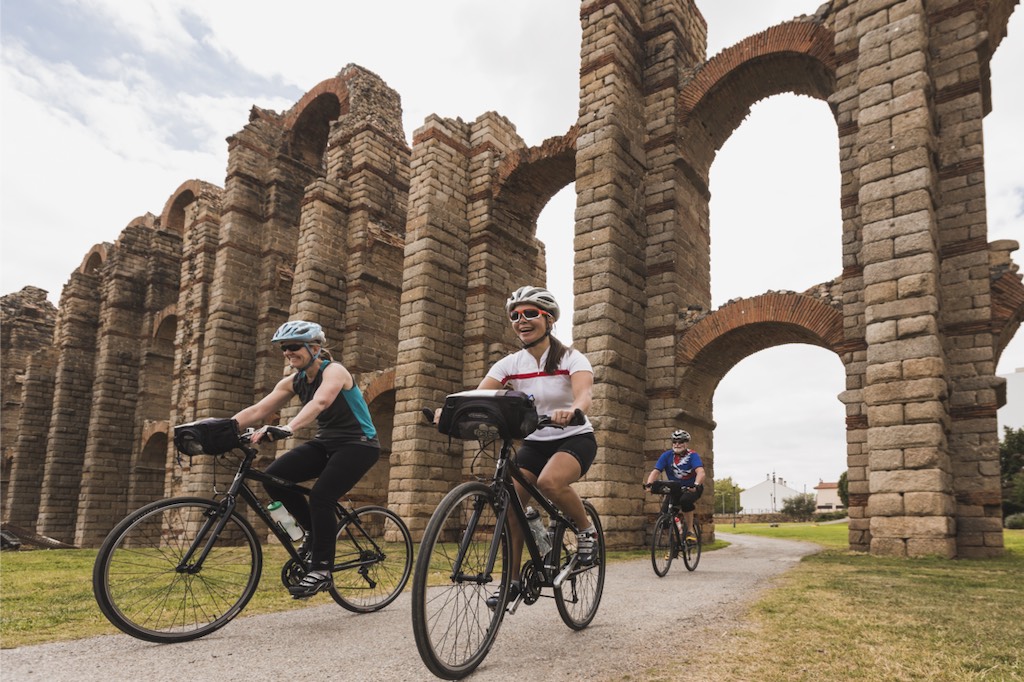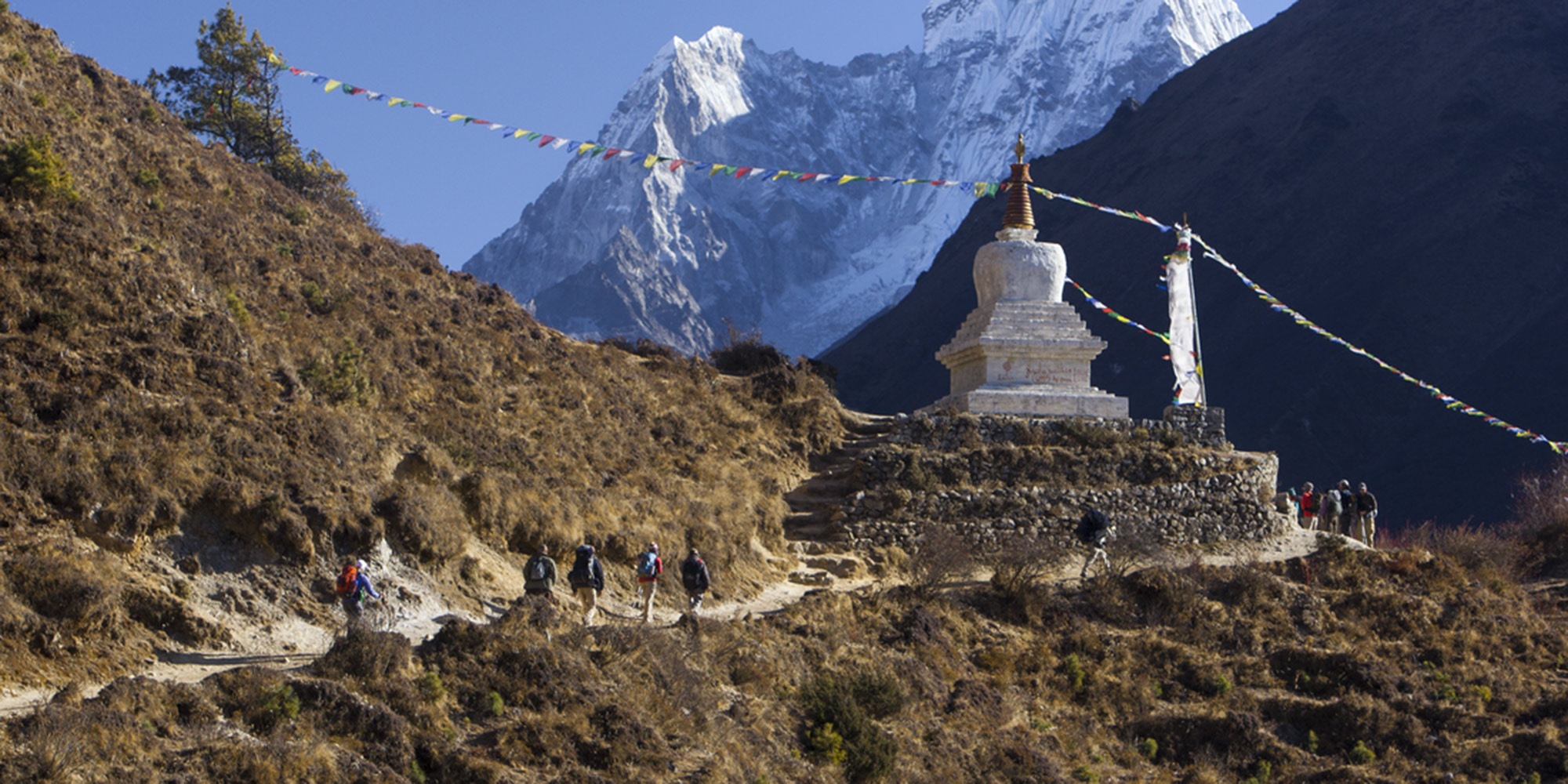Packing for a bucket-list trip to Nepal, Peru or a remote destination in the U.S. might seem daunting, because hey, it’s not every day you head hundreds or thousands of miles from home. How many pairs of socks do you need? Should you pack trekking poles? What goes in your carry-on? And, how do you keep your passport safe?
We sat down with two experts to bring you top tips from their years of travel experience.
1. Keep important documents safe.
Keep your passport, driver’s license and travel insurance on your person at all times. (If you’re going on an adventure travel trip, consider purchasing emergency medical and evacuation coverage.) It’s also a good idea to scan those documents, save them to your phone and email them to yourself and your contacts at home. Save other important documents—like reservations and itineraries—as photos that you can access via your phone or create an email folder you can access from any location. “If you’re traveling internationally, also have a physical copy of your passport and pack it separately so you can go to the closest embassy and show it to get help faster,” said travel guide Belinda Gardner.
2. Lighter is better with adventure travel.

If you’re touring by bike or exploring multiple destinations, you “may be moving every night, so you don’t want to have a ton of stuff. Keep your luggage light and small,” guide Janel Jensen said. Don’t know where to start? Ditch items that don’t serve two purposes—for example, Belinda packs a poncho in lieu of both a rain jacket and a backpacking pack cover. For more tips, read How to Pack Light for Traveling.
3. Be smart about your carry-on.
Belinda always carries a warm layer, a spare toiletry kit, medications, clean socks and underwear in a daypack. She wears her hiking boots and straps her cycling shoes and helmet to the outside of her carry-on (the combo doubles as a great conversation starter), so she’s ready for day one of her adventures, even if the airline loses her luggage.
4. Go with quick-dry clothing.
“You want clothes that you can hand wash and dry overnight on a towel rack,” said Janel. Synthetic pants and shirts not only pack small but also wick sweat and dry in a flash after washing. Be extra prepared by bringing detergent along, too. We love the Sea To Summit Trek and Travel (liquid) and Pocket (mini-sheets) laundry wash, which are both TSA carry-on compliant.
5. Fewer clothes are better.
Janel brings three pairs of clothes—a mix of trekking pants and shorts and long-sleeve and short-sleeve shirts, and usually one dress, too. “People get so worried about wearing the same clothes over and over again—but no one is paying attention,” said Belinda. Remember what you’re there for, and think and pack like a backpacker.
6. Pack small.
The experts were split on the age-old debate on whether to roll clothes or fold them. Proponents of rolling say rolled clothes take up less space and you can see all of your stuff at a glance. Those who fold say flatter clothes are more easily packed. Both proponents of rolling and folding recommend Eagle Creek packing cubes. These colorful cubes separate your underwear from your toiletries to keep you organized on long excursions. Remember to fill every inch of available space in your luggage. “I always have a hat and it’s upside-down in the center of the bag with clothes stuffed inside. It seems to keep its form well that way,” said Ashlee Langholz, program manager for content at REI, and avid adventure traveler.
7. Use a duffel bag.

“Duffels are better than hard-case luggage because they are soft,” said Janel. It’s true: Whether playing luggage Tetris in the trunk of a taxi or on the backs of pack animals, duffels have a leg up on hard-sided bags. The REI Co-op Big Haul 40 Recycled Duffel or Big Haul 60 Recycled Duffel, with easy backpack conversion, are two super versatile options. Simply put, duffels with straps make rushing through the terminal or running for the bus easier, not to mention the fact that they’re durable and smashable—a necessity when it comes to adventure travel. Plus, “I feel like I’m training when I walk through airports,” said Ashlee.
8. Double up on socks.
They’re the one thing that barely takes up any room. “I don’t skimp on socks. I don’t mess around with them,” said Janel. Don’t forget to stash away a pair of “sacred socks.” That’s the pair you save to wear when everything else is soaking wet or ruined. For a few recommendations, read our Best Hiking Socks guide.
9. BYOWB (Bring Your Own Water Bottles).
While you can’t carry water in water bottles through TSA, you can fill up your bottles on the other side. It’s one way to be more eco-friendly during your travels, even as your carbon footprint expands with each plane ride. We are all about the Katadyn BeFree Collapsible Water Filter Bottle because it collapses into next to nothing and filters water as you drink.
10. Be prepared for rain.

In fact, be prepared for any weather. Think like a backpacker and bring a rain jacket—and depending on the climate, rain pants and a pack cover, too. After all, “when you’re on an adventure travel tip, you’re going to hike regardless of the weather,” Janel said.
“As long as you have your passport, clean underwear and a sense of adventure, you’re good to go.” – Belinda Gardner, REI Adventures program manager.
11. Always have your Ten Essentials.
“I have the REI Co-op Expandable Packing Cube that I keep my Ten Essentials in. It goes with me everywhere, and I often travel with it if I’ll be doing anything active on the trip,” said Ashlee. “And remember to take out your multi-tool if you’re not checking the bag!”
12. Bring your own over-the-counter medications.
If you’re on a guided expedition, your guides will have plenty of group first-aid options. Even so, having your own tried-and-true blister kit, hydrocortisone, antibiotic ointment and allergy pills is important. Be sure to bring extra prescription meds in your carry-on, too. There’s no guarantee you’ll be able to get your hands on certain essentials in far-flung places.

13. Take a bandana or Buff.
This is probably one of the most versatile items you can pack—you can use it for dust, sweat, stopping runny noses, finding new hairstyles and simply making a fashion statement. And, if you’re in the backcountry, pack two and you’ll have a pee rag, too.
14. Don’t forget your light source.
Janel uses her phone’s flashlight in dimly-lit shared spaces, so as not to bother her roommates. Places vary, she says, like “in Nepal where they regulate their light. Sometimes you’re caught without electricity for hours on end, and you’ll need a light source,” or you’ll be stuck in the dark. We recommend a small rechargeable headlamp like the ones from Biolite.
15. Locks can be a theft deterrent.
But they’re not theft-proof. If you’re going to put a lock on your duffel or luggage, invest in a TSA-compliant lock like the Pacsafe Prosafe 800 so airport staff can access your checked luggage without having to damage your bag. As always, don’t pack anything valuable—keep it on your person instead.
16. Ask your airline for backpack protection.
If you’re only flying with a backpack, make sure to protect the straps by cinching them tight and wrapping your hipbelt around the back of your pack. Then pack the whole thing in a large duffel or plastic bag, which most airlines can provide.
17. Check your trekking poles.

It’s an age-old question: carry-on or check? Although we’ve heard tales of carrying them on, most airlines require you to check them because they do have a pointed tip. “I love my Leki trekking poles that weigh nothing and fold up. Just be sure to make sure they fit in your suitcase,” Belinda said. To protect your duffel, use the trekking poles’ tip protectors, and to protect them from bending or breaking, pack them close to something substantial, like your daypack.
18. Keep your lesser-used items at the bottom of your duffel.
Stack the bottom of your duffel with heavy items you aren’t planning on accessing right away—think extra shoes, rain pants, crampons and a daypack. And, what are you using right away? Pack toiletries right on the top, so you’re not digging through your pack if you get to your destination late at night.
19. Double-check TSA regulations before you pack.
Here is your full resource for TSA regulations.
20. What gear should you bring and what should you rent?

Belinda has this down to a science. If she’s spending a day or two doing a sport, she’ll rent everything she needs when she gets to her destination. If she’s there for a longer tour, she’ll bring the most important gear she needs for each activity:
- Cycling: Pack your helmet, shoes, gloves and saddle. Leave your bike at home—you can rent really nice bikes and try out a new brand in a different country. Plus, you’ll save yourself the cost and hassle of taking your bike apart, flying it there and putting it back together.
- Backpacking: Pack your boots, sleeping bag and backpack. You can rent pads, tents and trekking poles from most guiding companies.
- Mountaineering: Pack your boots and harness. Your guide can provide the rest.
- Watersports: Pack your favorite mask and snorkel—because if you’re in Baja California swimming with sea lion pups, you’ll really want a good fit. Rent the wetsuit, paddles, PFDs and boats at your destination.
- Yoga: Pack your mat and towel. It might take up some space in your bag, but being comfortable is worth it. Plus, if you’re planning on enjoying your practice on the beach, at a local park or even in your hotel room, it’s much harder to rent a mat abroad.
Once you’ve mastered the art of packing for adventure travel, plan your next trip!
This article was originally published on Sept. 17, 2017, and was updated on Oct. 18, 2022.
